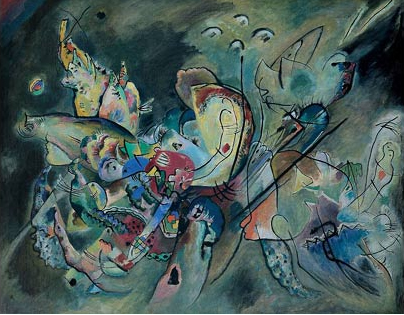The Russian painter, print-maker, stage designer and art theorist Wassily Kandinsky (1866-1944) is widely credited with having created the first purely abstract paintings. He is an important albeit frequently impenetrable artist, much prone to abstruse philosophising and gnomic statements; and his work, surprisingly, has never been shown in depth in this country. Sixty-two years after his death, Tate Modern’s new exhibition, “Kandinsky: The Path to Abstraction”, belatedly fills the gap. Just over 70 works have been included, spanning the most fertile period of his career – from 1905 until 1921 – many of which have been loaned by State and regional museums in Russia. Hardly any of the works on display – only half a dozen or so – have ever been seen in Britain before.
Kandinsky came to art relatively late in life. He was brought up in Odessa and studied law and economics at Moscow University. An activist and political idealist, he protested vigorously against a ruling by the Tsar which outlawed student unions, wrote a dissertation on the legality of labourers’ wages, painted desultorily in his spare time and pursued an extracurricular interest in ethnology. In the summer of 1889, the Society of Natural Science and Anthropology sent him to Vologda Province in north-east Russia, where he became interested in peasant folk art and subsequently published two articles on peasant law and paganism among the remote tribes of Siberia.
Then in 1895, in an art gallery in Moscow, he experienced what he subsequently described as a moment of revelation – one of several in a life that often seems to have resembled that of a charismatic priest, as much as that of a painter – while standing before one of Monet’s depictions of a haystack shimmering in the late afternoon sun. The following year, 1896, Kandinsky left...

Kandinsky: The Path to Abstraction, at Tate Modern 2006
02-07-2006

